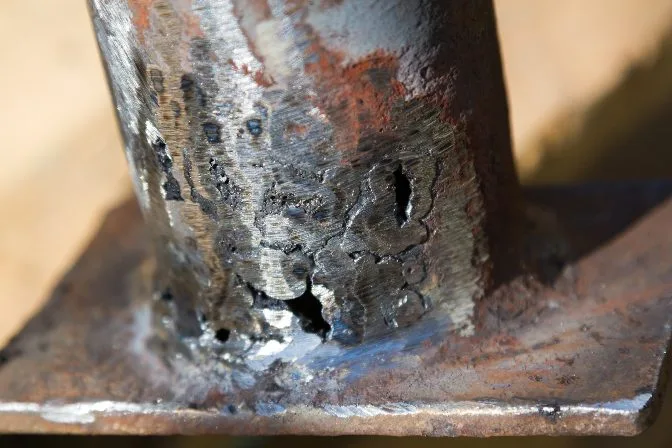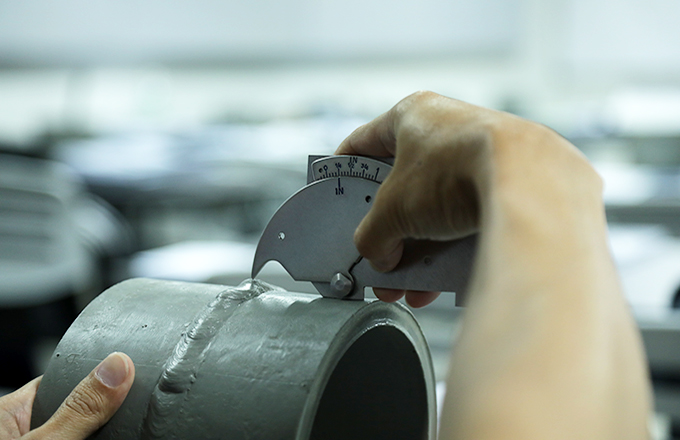How Welding Inspection Milwaukee Enhances Structural Stability
Secret Aspects to Think About in Welding Assessment for High Quality Assurance
Welding assessment is a critical facet of quality control that includes different elements essential for ensuring the honesty of bonded structures. Key considerations consist of the choice of appropriate examination techniques, the qualifications of employees, and adherence to sector requirements. The effectiveness of various assessment approaches-- such as aesthetic, ultrasonic, and radiographic testing-- can significantly affect the outcomes of top quality assessments. Durable paperwork techniques are important for maintaining traceability and assisting in continuous enhancement. However, the interplay of these aspects raises better questions regarding just how they can be optimized to improve total welding high quality.
Kinds of Welding Procedures
Welding procedures incorporate a selection of techniques utilized to join materials, mainly metals, through the application of warm, pressure, or both. The most common sorts of welding processes include arc welding, gas welding, resistance welding, and solid-state welding.
Arc welding, which includes techniques like Shielded Steel Arc Welding (SMAW) and Gas Tungsten Arc Welding (GTAW), uses an electrical arc to create warmth for thawing the base steels and filler materials. Gas welding, commonly described as oxy-fuel welding, utilizes a flame produced by burning a fuel gas with oxygen to melt the steels.
Resistance welding, consisting of place and joint welding, relies upon the warm produced from electrical resistance to bond products, typically made use of in auto production. Solid-state welding procedures, such as friction welding and ultrasonic welding, join products without thawing them, utilizing mechanical pressure and frictional warmth.
Each welding procedure has certain applications, staminas, and limitations, making the option of the ideal method important for accomplishing desired weld top quality and efficiency. Welding Inspection Milwaukee. Comprehending these processes is important for guaranteeing efficient welding practices and supporting quality control in manufacture and manufacturing markets
Assessment Devices and techniques
To ensure the honesty and dependability of bonded joints, different evaluation techniques and tools are employed throughout the welding procedure. These methods can be broadly classified into non-destructive screening (NDT) and destructive screening (DT) methods. NDT techniques, which do not compromise the stability of the bonded element, consist of visual assessment, ultrasonic testing, radiographic screening, magnetic fragment testing, and fluid penetrant testing.
Visual examination is the most essential strategy, enabling the prompt recognition of surface area issues. Ultrasonic testing makes use of high-frequency acoustic waves to find internal defects, while radiographic screening uses X-rays or gamma rays to imagine the inner framework of welds. Magnetic particle testing is reliable for spotting surface and near-surface discontinuities in ferromagnetic materials, and liquid penetrant screening discloses surface-breaking defects by applying a colored color or fluorescent penetrant.
On the various other hand, devastating testing involves physically checking the bonded joint till failing to assess its mechanical properties. Tools such as tensile testing devices, effect testers, and solidity testers are commonly used in this context. By employing a combination of these tools and techniques, examiners can make certain the quality and security of welded frameworks.

Importance of Documents
In the world of welding evaluation, appropriate documents offers as an essential foundation for high quality assurance and regulative conformity. Paperwork includes a large range of documents, consisting of weld procedure specs, inspection records, and non-destructive screening results. These documents not just give a sequential account of the evaluation procedure but likewise work as a referral for future evaluations and audits.
Precise documents makes certain that all welding activities are proven and traceable, promoting adherence to relevant sector standards and codes. It becomes vital during the review procedure, permitting stakeholders to assess compliance with specs and determine any kind of defects or inconsistencies. Detailed records support effective interaction among group members and outside auditors, fostering a culture weblink of transparency and responsibility.
On top of that, well-maintained paperwork can significantly lower the danger of costly rework or failures. By making sure that all necessary details is videotaped and accessible, organizations can streamline their quality control processes, eventually enhancing the stability of the welded structures. Investing time and resources right into creating durable documentation methods is not simply a procedural need but a calculated imperative for accomplishing long-term success in welding procedures.
Worker Qualifications and Training
How can organizations make sure the proficiency of their welding employees? To maintain high requirements of quality guarantee, it is necessary for organizations to buy detailed training programs tailored to the specific demands of the welding sector. Welding Inspection Milwaukee. This includes not just first training however additionally constant education and learning to maintain workers abreast of developing techniques and modern technologies
Organizations should establish clear standards for employees qualifications, including pertinent qualifications and experience in different welding techniques. Using certified welding examiners (CWIs) can enhance the high quality of evaluations, as these professionals possess the needed expertise to make sure and recognize potential issues adherence to best methods.
Along with technological skills, organizations need to foster a culture of safety and security and conformity amongst their welding employees. Supplying routine workshops and correspondence course can aid look at this site strengthen the significance of safety methods and the ramifications of non-compliance.
In addition, organizations must execute efficiency evaluations and comments systems to analyze employees competency with time. By systematically attending to training requirements and advertising a dedication to top quality, companies can improve their welding assessment procedures, inevitably causing boosted item honesty and consumer satisfaction.
Compliance With Sector Standards
Sticking to market requirements is vital for making sure the high quality and security of welding procedures. Compliance with recognized requirements, such as those set by the American Welding Society (AWS), American National Standards Institute (ANSI), and International Organization for Standardization (ISO), gives a structure for analyzing the stability of welded structures. These standards incorporate numerous elements of welding, including material option, style specs, and procedural strategies.
Welding examinations need to be carried out based on these criteria to confirm that the work meets the needed high quality criteria. This consists of aesthetic evaluations, non-destructive testing (NDT), and detailed paperwork of findings. Making certain conformity not only boosts the dependability of the welds but additionally reduces threats connected with structural failings.
Furthermore, adherence to sector requirements cultivates a culture of safety and professionalism within the labor force. It establishes a standard for performance and motivates continuous enhancement through routine audits and training. Inevitably, compliance is not simply a regulatory need; it is a commitment to excellence that shields both workers and the setting while delivering high-grade welding products.
Verdict

Welding assessment is a vital facet of high quality guarantee that encompasses numerous factors necessary for guaranteeing the honesty of welded structures.To make certain the integrity and dependability of bonded joints, various assessment techniques and tools are this content utilized throughout the welding procedure.In the realm of welding assessment, correct documentation serves as an essential backbone for high quality guarantee and governing compliance.Welding evaluations need to be conducted in accordance with these requirements to confirm that the job fulfills the required high quality requirements.In verdict, reliable welding inspection for quality assurance needs a diverse strategy that incorporates the selection of appropriate evaluation methods, stringent adherence to market requirements, and thorough documentation of results.